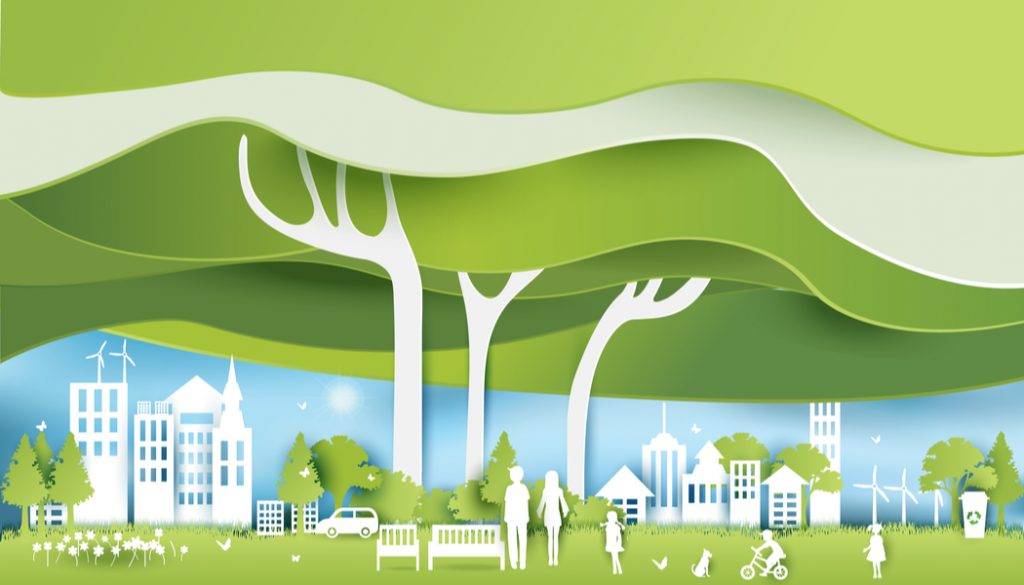Our surroundings influence our sensorial world. Everything around us creates or stimulates some kind of emotion. Every action or activity such as walking through the town, visiting parks or community centres, shopping at malls or stores, touring unfamiliar locations, walking into corporate building or workplace, irrespective of where we are or what we do, all our environs continuously sending message converting some sort of information, guidance or impressive stories.

All the minimal visual impressions we comprehend from our surroundings come under the umbrella of environmental graphic design. It has emerged as the major tool for visual communication and positive market opportunities in the form of signage, graphics, art installations, identity, a strategic combination of colours, and more. Let’s delve deep to understand more about environmental graphic design:
What is Environmental Graphic Design?
Environmental graphic design (EGD), popularly also tagged as experiential design, is an inclusive way to integrate or communicate the story embracing multi-disciplines of design, including architectural, graphic, landscape, interior, and industrial design. All the disciplines are aligned with elements such as typography, colours, patterns, shapes, images, themes and infographics to convey the message or create memorable experiences with the space or place.
EGD involves designing in surroundings with large-scale design and other arts to create marketing opportunities, make a brand memorable, and enhance customer relationships.
Moreover, when designed and implemented properly, environmental graphic design can be immensely valuable. Let’s have a look at some of the positive impacts of well-curated environmental graphic design:
- Provides navigation channels or signage for wayfinding, creating a sense of comfort and understanding.
- Enhance employee’s productivity, commitment, positivity, and sense of belonging in the workplace.
- Educate various stakeholders of the company about its affluent legacy.
- Introduce the brand’s value, offerings, and missions to various stakeholders.
- Creates soothing and healing space and thus reduces stress along with improving health.
Environmental Graphic Design Practices
Placemaking and Identity Design
One of the vital aspects of environmental graphic design is enhancing your visual brand by providing an exquisite customer experience. Placemaking designing activity uses communication channels to create an immersive customer experience connecting the audience with the nearby place. Whereas identity design layout cultivates a strong perception of “you are here” by distinguishing the place from others by using assorted graphic elements.
Importantly, placemaking and identity design completely transform the place using various patterns, types, topography, colours, videos and motions. Mostly, it uses a perfect combination of physical characteristics, including natural features, history, culture, people and associated things that make a place unique and attractive.
Wayfinding
As the name suggests, the wayfinding system is an inclusive system that guides the audience to the place they are looking for. It simply characterizes the creation of visual paths and helping individuals to navigate the place on their way to reach their desired destination. Along with signage, the path is decorated with visual cues such as infographics, maps, directions and illustrations guiding people to reach the destination.
One can see wayfinding everywhere, but most of the time, you will come across it at hospitals, railway stations, corporate offices, and malls in the form of signage, ceiling and wall graphics enhancing customer experience.
Exhibition Design
Visual branding is all about the compelling story of the brand and how it entices the target audience. Exhibition design is an indispensable aspect of environmental graphic design, creating a flurry of visual information that portrays the brand’s story competently. It exhibits the relay of visual information through architecture, interaction design, graphic design, audio, lighting, and technology.
The places like museums, recreational areas, community parks, or visitor centres are considered as the popular environment that embraces creative and impactful visuals that intensify the brand’s story.
Public Installations
Utilizing public space is a great way to reach the masses through environmental graphic design. Designing and crafting a brand’s essence through public installations offering a wide array of experiential marketing possibilities. It is an inclusive response to penetrate the public space or physical landscape with meaning and context using various kinds of media and materials to connect, communicate and influence the audience.
Public installation design can take into any shape and usually varies depending on the place. It can be memorials, gateways, artworks, signage, contextual- elements, premium graphics, and assorted corporate elements that befit the brand impressions.
Essential Tips to Insightful Environmental Graphic Design
EGD is composed of multiple visual disciplines that require a strategic framework to create an immersive look and establish interaction and engagement goals. It is all about enhancing the audience’s experience and creating a long-term impression. Here are some resourceful tips for environmental graphic design:
Read and Understand Your Area
Space and dimensions are the critical aspects of environmental graphic design. So, it is essential to get complete knowledge about the area, including objectives, architecture, landscape, lighting, and more.
Interact with Audience
Perfect and insightful surroundings should communicate and engage with the audiences or users. They should feel comfortable and easily connect with the ambience. Use visual impressions that stimulate the emotion of the audiences creating a positive experience.
Simplicity, Yet Attractive
Simplicity is the key, especially in visual presentations. It should be decorated with a simple design and able to catch the audience’s attention. The brand’s message should be portrayed crisply and clearly so that anyone can comprehend it.
Immersive Colour Combination
Colours create a huge impression on the psyche, influencing the emotions of the customers. So, depending on the landscape and surroundings, choose the optimum colour aligned with the brand’s objectives. In addition, try to avoid complex or dubious complexions.
Summing Up
Environmental graphic design has the potential to make space or place lit with insights and inspirations, creating positive interaction and engagement with the brand. As we know, environmental graphic design is an innovative way of marketing that has gained immense popularity in recent years. It is fascinating and looks attractive; however, there is a lot of endeavor and expertise required behind its practice. So, connect with VOWELS and amplify your brand presence with inclusive environmental graphic design. Contact us to get comprehensive details. Our team of experts will assist at every juncture.
Also Read – Types of Graphic Design






